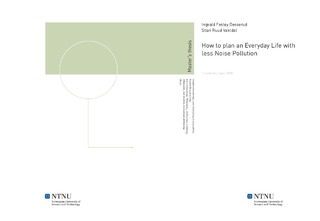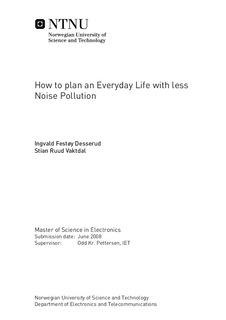| dc.description.abstract | In this master thesis a software, MapMonit, that use real measurement data as a basis to calculate noise maps was studied. The project focus on noise from roads. Simulations in MapMonit based on measurements were compared with control measurements and simulations of existing noise computation software. The software used for comparison was CadnaA. The project started with measurements of road traffic noise with four microphone heights at four distances that would be used as input to the software called MapMonit. Since this was the first time the software ever got tested with real measurements, the first test site was chosen to be as simple as possible with a long, straight road and surrounding flat fields. The microphone distances from the road edge were 5 m, 10 m, 20 m and 100 m with microphone heights 0.4 m, 1.5 m, 2 m and 4 m at each of the distances. A grid of control microphones were positioned in the vicinity from 10 m to 180 m from the road edge. At distances 5 m to 20 m for microphone heights 1.5 m to 4 m, the results turned out to be very good. The difference between the A-weighted levels of MapMonit simulations and the control measurements was generally less than 1 dB for all control positions. Compared to CadnaA, the two simulated levels were very similar for propagation paths up to 100 m with differences below 1.4 dB. At control distances over 170 m, the difference was very high, up to 5.3 dB, with MapMonit simulating the highest values. A complicated test site in the vicinity of a noise screen were also studied. The reference microphones for input to MapMonit were placed in front, above and behind the screen, and one behind a garage also on the quiet side. The control measurements were placed around the neighborhood at the quiet side of the noise screen. Due to a flaw with the MapMonit software implementation, the results were presented with flat topography. The reference microphone in front of and above the noise screen gave satisfying results, with differences less than 2 dB at all control positions except for a position just behind a garage. Obstacles along the propagation path included both a noise screen and buildings. Choosing the microphone mounted just above the noise screen, the difference between the A-weighted levels of CadnaA and MapMonit was less than 1 dB for all positions except the one behind the garage. | nb_NO |

